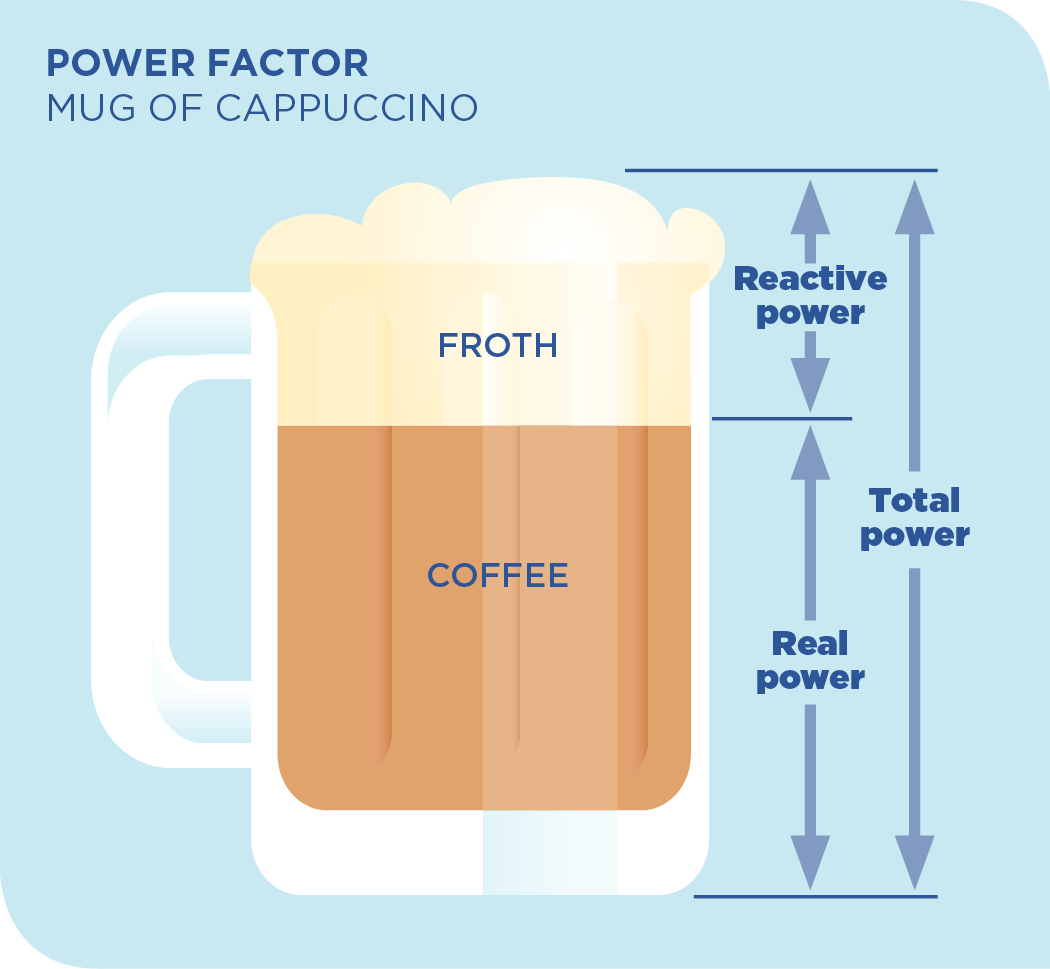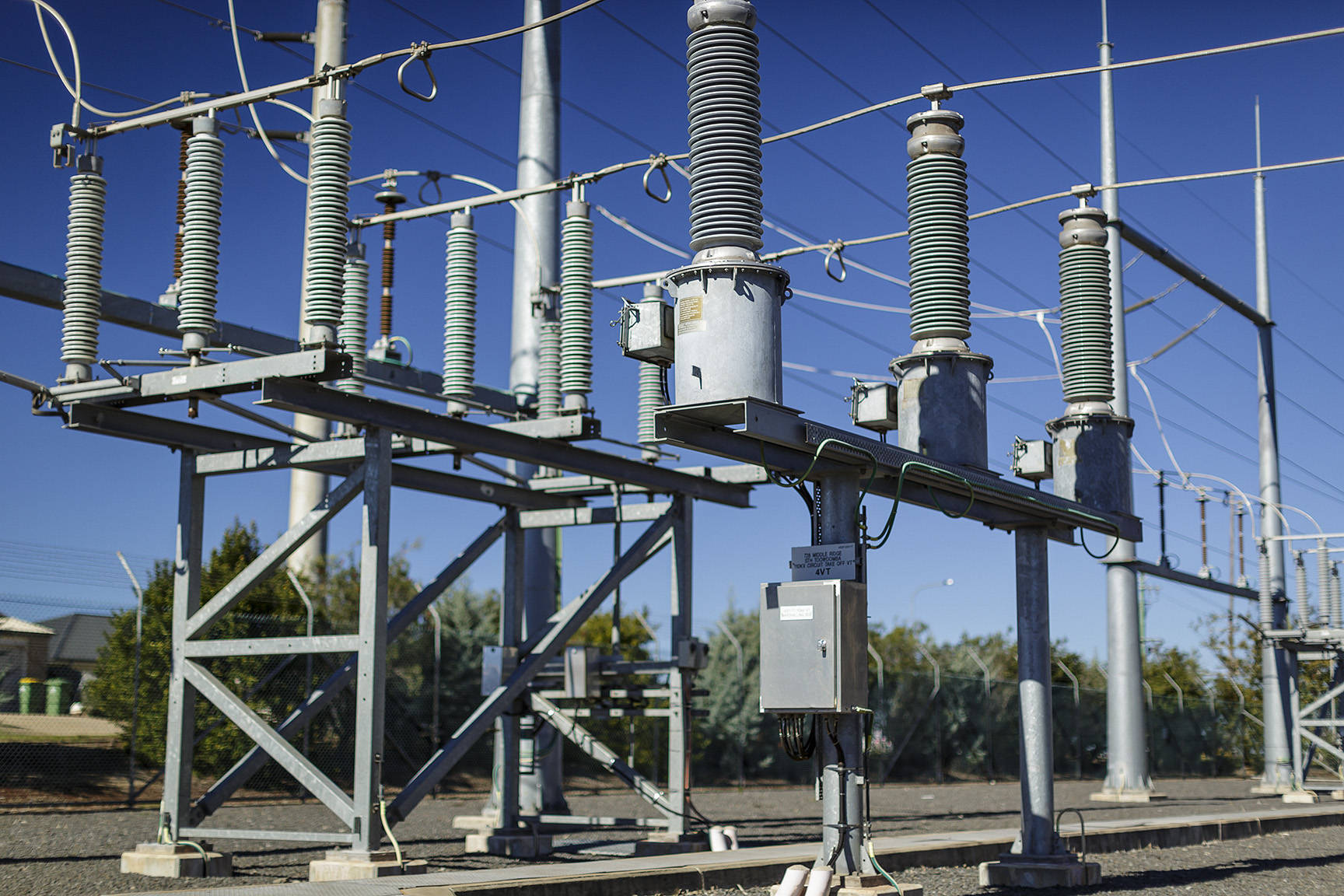Power factor
Power factor is a measure of the ratio of the 'total power' kVA (also known as apparent power) that is demanded by your site and the 'real power' kW that is used on your site.
The ratio of the real power to the total power is your power factor, a number between 0 and 1. The higher the power factor the more efficient your site is at utilising the supplied power.
A simple analogy to explain power factor is that of a cappuccino. Here the mug must have sufficient capacity to contain both the coffee and the froth, corresponding to the total power. The froth represents the reactive power and the liquid represents the real power. We only gain real value from the liquid.

Why is power factor important?
Most business customers classified as a Standard Asset Customer – Large, and above, will be on a demand-based electricity tariff. These tariff’s typically feature demand charges with the power demand measured in kVa, not kW. If a site has low power factor, the demand charges will be higher than if the site had a good power factor. Therefore, businesses on a kVa based demand tariff have a clear incentive to ensure their site has good a power factor – otherwise their power costs could be significantly higher than it would otherwise be.
From a wider network perspective, requirements under the Electricity Regulation 2006 (Qld) are in place to require customers to maintain appropriate power factor at their premises. This is in place to help avoid having to upgrade the network due to poor power factor across the network – these costs would be passed on to customers in the form of higher tariff prices.
The minimum required power factor is 0.8. For all other high voltage connections, the power factor ranges are set out in the National Electricity Rules as follows:
| Supply voltage (nominal) | Power factor range |
|---|---|
| 50 kV and 250 kV (high voltage) | 0.95 lagging to unity (1.0) |
| 1 kV < 50 kV (medium voltage) | 0.90 lagging to 0.90 leading |
| <1 kV (low voltage) | 0.8 lagging to unity (1.0) |
How to measure your power factor
There are a variety of ways to measure your power factor:
- Logging devices on equipment
- More complicated measurement and logging equipment installed on individual circuits
- Electricity metering may also have the ability to record power factor (typically ½ hour interval data) for the entire site and this information may be available from your electricity retailer.
If you don't have the skills in-house, you may engage an external specialist to help you to assess your power factor and identify any causes and solutions to improving your power factor.
There are a variety of reasons that a site may have poor power factor, but the main causes are:
- Inductive loads such as transformers
- AC motors
- Welding equipment
- Arc furnaces and fluorescent lighting.
Benefits of improving your power factor
There are a number of benefits to increasing your power factor:
-
1 Lower power bill
Your billable demand charges will be lower, which will help reduce your overall power bill (applies to customers on a kVa based electricity tariff).
-
2 Contractual compliance
To help you meet your requirements outlined under your connection agreement
-
3 Increased capacity
Reducing demand on the network may allow you to connect additional machinery or equipment without the need to upgrade the network
-
4 Equipment life
Poor power factor can result in lower voltage being supplied to equipment which can damage or otherwise shorten the life of some equipment
-
5 Reduced carbon footprint
Poor power factor ultimately means more energy is needed to supply your site and so improving the power factor can lower your carbon emissions
Ways to improve power factor
A poor power factor can be addressed in a number of ways. The most common approach is to install power factor correction equipment (PFC). PFC equipment is essentially a capacitor bank – which stores and provides reactive power when required. PFC equipment can be applied to separate pieces of equipment or installed in bulk to the sites main switchboard.
A poor power factor can also be corrected by fixing the problem at its source. For example, by ensuring that motors are not oversized, selecting pumping equipment with electronic variable speed drives (VSDs), retrofitting VSD's where possible, and choosing equipment that has good power factor to begin with.
Steps to identify and implement power factor correction
Identify if your site has opportunity to improve power factor
There are a variety of ways to measure power factor, including:
- Logging devices on individual equipment
- More complicated measurement and logging equipment installed on individual circuits
- Electricity metering may also have the ability to record power factor for the entire site and this information may be available from your electricity retailer – either on your bill on request from your electricity retailer or metering provider.
Identify cause and solutions of poor power factor
Large sites will usually have in-house or contracted engineering or energy management expertise available who have knowledge of your plant and equipment and are often best placed to identify cause of poor power factors. Alternatively, either independent energy management consultants or suppliers/installers of power factor equipment will be required to identify the cause(s). Sites with the loads outlined above tend to have poor power factor.
Designing solutions to power factor
Implementing power factor improvement measures is a specialist skill and using qualified and experienced providers to design a tailored solution should ensure the best result for organisations wishing to improve their power factor. Once any power factor equipment or other changes have been implemented, it is important to measure and verify the changes in power factor that have been achieved and compare those to any pre-installation expectations. Installers of power factor correction equipment should be mindful to ensure the installation does not impact on our network e.g. audio frequency load control.
Maintenance
Once your power factor correction measures are implemented, like any electricity equipment, some maintenance is required to ensure the equipment continues to provide the expected benefits. Your supplier should provide advice on the necessary maintenance that is required to be undertaken.

